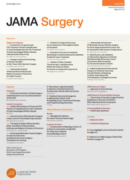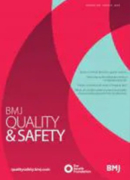The Trajectory of Quality and Safety: an Exploratory Analysis of BMJ Quality Forum Conference Programs
Short analysis of BMJ Quality Forum programs: a broadening horizon
In the ever-evolving landscape of healthcare, the intersection of personal development and programmatic expansion forms the cornerstone of quality and safety initiatives at hospital, regional, national, and global levels. This dynamic interplay ensures that healthcare systems are robust, responsive, and – most of all – aligned in delivering patient care.
The BMJ Quality Forum has long served as a beacon for these initiatives, and an analysis of its conference programs offers a unique lens through which to view the trajectory of the Quality & Safety movement. This short analysis delves into the cultural and programmatic evolution reflected in the forum’s streams (topics), shedding light on the narrative that has shaped, and continues to shape, healthcare quality and safety.
A Broadening Horizon: From Local to Global Themes
The expansion of the BMJ Quality Forum’s program to encompass more global themes, moving beyond a sole focus on local improvements, signals a significant shift. By organizing the program through streams, the Forum has allowed for a detailed analysis that reveals a broader cultural and programmatic trajectory. This analysis, based on the streams from previous forums available on their website (excluding Copenhagen 2020 and Europe 2021, for which programmes were not available, but starting from London 2015), uncovers a complex narrative of evolution in Quality & Safety.
Methodology: Tracing the Evolution Through Streams
By examining the streams from London 2015 onwards, notable trends and shifts become evident. For instance, the stream initially titled “Leadership and management” in 2015 was rebranded as “Capability and leadership.” This change underscores a growing awareness that Quality cannot merely be managed into organizations. The term “capability” encapsulates both the skills and the headroom and support necessary to apply these skills within organizations.
Shifts and Disappearances: A Strategic Repositioning
Several streams present in 2015 disappeared by 2016, such as Clinical Improvement, Education and Training, and New Technology and Innovation. This triad might have been deemed too granular, prompting a strategic decision to consolidate these themes. The rebranding of the “Cost, value and quality” stream to “Quality, cost and value” in 2016 further highlights the prioritization of quality. Despite its critical role in discussions about the sustainability of quality programs in healthcare, this stream was absent by London 2024.
Similarly, the 2015 stream “Patient and family centred care” was renamed “Person and family centred care” in 2016, only to vanish by 2024. Such changes reflect shifting priorities and perhaps a broader, albeit sometimes unclear, rethinking of patient-centered approaches.
Emerging and Transforming Streams: Indicators of Cultural Shifts
The stream “Improvement science” saw its remit transfer to the “Improvement Science Symposium” under the Health Foundation’s patronage, only to reemerge as a stream in 2022. The “Improvement population and community health” stream’s transition to “Population and public health” in 2016, and its relative stability thereafter, except for a hiatus in Taipei 2019, points to an enduring focus on public health.
The stability of the Patient Safety stream contrasts with the evolving nature of others. The appearance of “Integrated care (co-production)” as a distinct stream in Gothenburg 2022 further underscores a shift towards collaborative, integrated healthcare models.
London 2024: A New Branding Approach
London 2024 marked a notable change with each stream named with a single word, reflecting a potential cultural shift. The introduction of the “Change” stream, focusing on complexity theory, and its overlap with the “Science” (Implementation Science) stream, suggests a convergence of themes and ideas. However, unlike the 2015-2016 transition, which emerged from a deep cultural awareness, the 2024 rebranding appears to preempt cultural change rather than follow it.
The Need for Clarity and Specificity
The broad naming of streams in 2024, while aiming to clarify areas of discussion, has resulted in a loss of specificity, turning streams into general catch-alls. They no longer clearly indicate the area of impact or direction, becoming somewhat self-referential. To address this, a return to clear and specific naming of streams and lecture titles is suggested, specifying the expected impact areas (hospital, community, national, global).
Conclusion: Balancing Quality and Resources
At a time of heightened awareness regarding the quality vs. resources challenge, staff engagement should be sought through relevance and specificity. By refining the clarity and specificity of streams and their titles, the BMJ Quality Forum can better support the development of ideas and projects that are impactful and relevant, ensuring the sustained growth and effectiveness of Quality & Safety initiatives in healthcare.
Carlo Benzoni, Director | Quality Improvement Italia
8 Novembre 2024 / DA QUALITY-ADMIN



